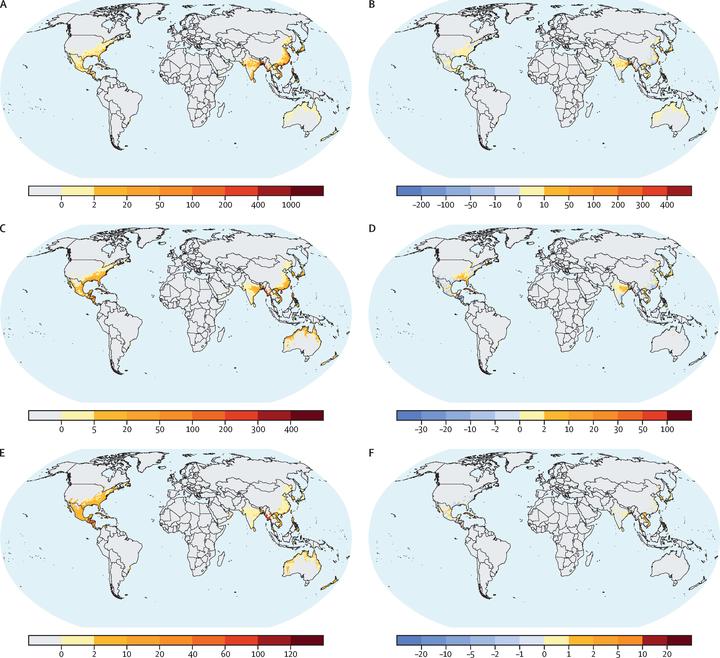Global short-term mortality risk and burden associated with tropical cyclones from 1980 to 2019: a multi-country time-series study

Abstract
Background. The global spatiotemporal pattern of mortality risk and burden attributable to tropical cyclones is unclear. We aimed to evaluate the global short-term mortality risk and burden associated with tropical cyclones from 1980 to 2019. Methods. The wind speed associated with cyclones from 1980 to 2019 was estimated globally through a parametric wind field model at a grid resolution of 0·5°× 0·5°. A total of 341 locations with daily mortality and temperature data from 14 countries that experienced at least one tropical cyclone day (a day with maximum sustained wind speed associated with cyclones ≥17.5 m/s) during the study period were included. A conditional quasi-Poisson regression with distributed lag non-linear model was applied to assess the tropical cyclone–mortality association. A meta-regression model was fitted to evaluate potential contributing factors and estimate grid cell-specific tropical cyclone effects.Findings. Tropical cyclone exposure was associated with an overall 6% (95% CI 4–8) increase in mortality in the first 2 weeks following exposure. Globally, an estimate of 97 430 excess deaths (95% empirical CI [eCI] 71651–126438) per decade were observed over the 2 weeks following exposure to tropical cyclones, accounting for 20·7 (95% eCI 15·2–26·9) excess deaths per 100 000 residents (excess death rate) and 3·3 (95% eCI 2·4–4·3) excess deaths per 1000 deaths (excess death ratio) over 1980–2019. The mortality burden exhibited substantial temporal and spatial variation. East Asia and south Asia had the highest number of excess deaths during 1980–2019: 28744 (95% eCI 16863–42188) and 27267 (21157–34058) excess deaths per decade, respectively. In contrast, the regions with the highest excess death ratios and rates were southeast Asia and Latin America and the Caribbean. From 1980–99 to 2000–19, marked increases in tropical cyclone-related excess death numbers were observed globally, especially for Latin America and the Caribbean and south Asia. Grid cell-level and country-level results revealed further heterogeneous spatiotemporal patterns such as the high and increasing tropical cyclone-related mortality burden in Caribbean countries or regions. Interpretation. Globally, short-term exposure to tropical cyclones was associated with a significant mortality burden, with highly heterogeneous spatiotemporal patterns. In-depth exploration of tropical cyclone epidemiology for those countries and regions estimated to have the highest and increasing tropical cyclone-related mortality burdens is urgently needed to help inform the development of targeted actions against the increasing adverse health impacts of tropical cyclones under a changing climate.